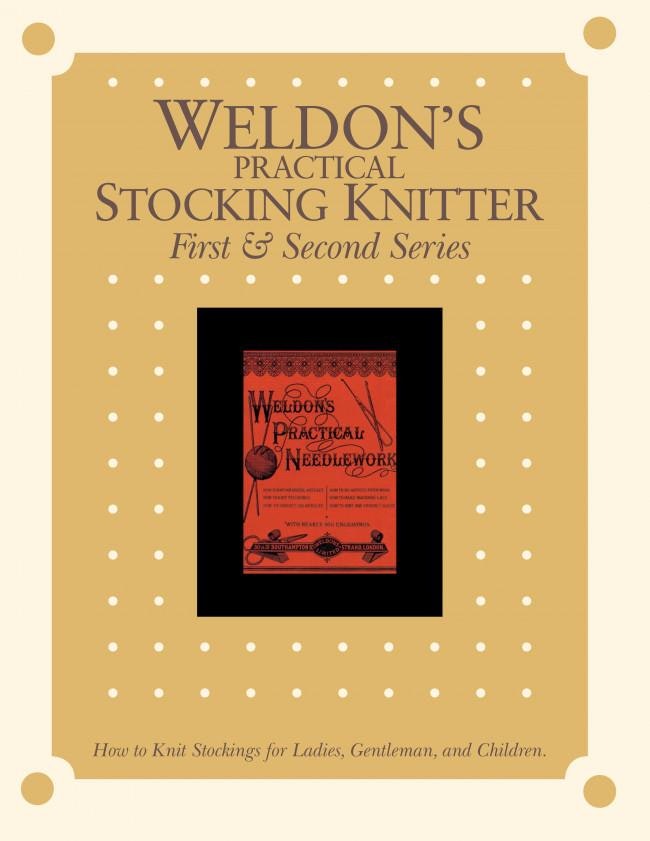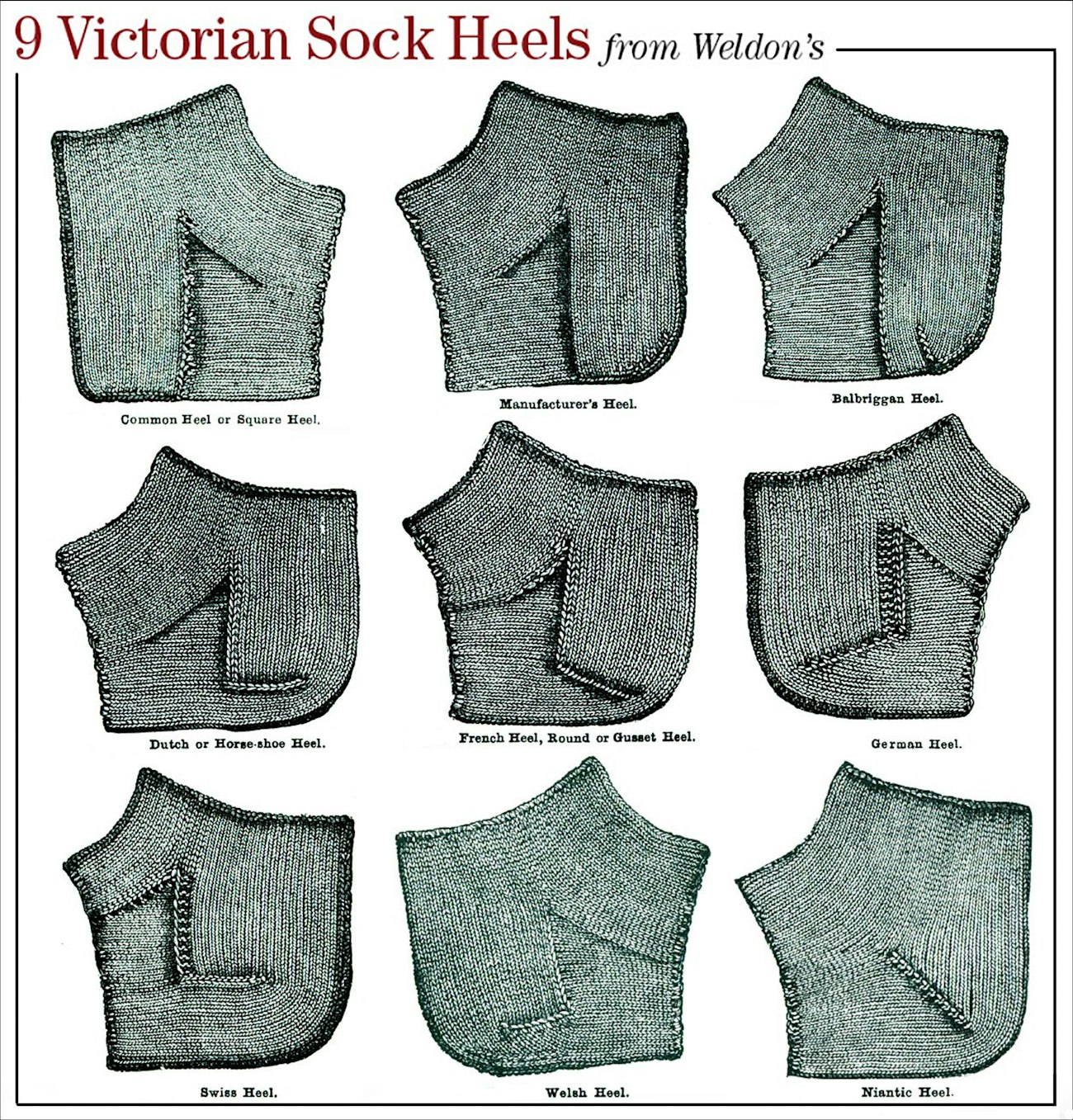What benefits can knitters gain from looking at patterns from the past? Victorians were ingenious when it came to using—and creating—a wealth of techniques. Have you ever knitted a sock from a modern-day pattern and have it not quite fit the way you want? Weldon’s Practical Stocking Knitter, vol. 1, lists over six different ways to shape a heel, and even more ways to adjust a toe! This makes it a great resource for learning how to adjust patterns for a better fit.

What is Weldon’s?
Several companies in 1800s England started publishing patterns and instructions for needlework to make them available to the middle class. Along with patterns for various techniques, other types of information filled the pages, including household hints, recipes, and stories. One such company that started as a paper-pattern company rose above the rest because their publication was solely devoted to needlework.
In 1885, Weldon’s began publishing a fourteen-page newsletter that was available by subscription. Each newsletter was devoted to a single technique and the company covered a vast variety, ranging from tatting, smocking, and crewelwork to crochet and knitting. As the newsletters rose in popularity, the company created a series of books containing twelve issues of the newsletter bound together. These volumes, known as Weldon’s Practical Needlework, are a fabulous resource for many different crafts and offer a glimpse into Victorian times.
How to Read It
Considering the Weldon’s patterns were written in 1800s England, the language used in the instructions is different than what we find in today’s patterns. In some ways, it is like reading a different dialect of the same language. The patterns follow UK standards, meaning the labeling system is opposite of the US version. Sock patterns calling for size 15 knitting pins translates to US size 00 knitting needles. To “work plain” is to knit stockinette stitch and “make one” is really a yarn over. A quick internet search will bring up several varieties of conversion charts and term comparisons to make this easier.

Those Pesky Feet
Victorians published patterns using several techniques for making socks fit better, especially in the heel. Two of the methods included in Weldon’s Practical Stocking Knitter, vol. 1, are the French heel and the Dutch heel. The French heel and the Dutch heel are similar in that they are both worked using short rows. The French heel is started sooner and has more of a V-shape to fit a narrow heel. There are also more stitches remaining after the shaping. Weldon’s recommends the French heel for those with higher insteps.
The Dutch heel starts later in the shaping and is recommended for those with a wider heel because the shaping is less pointed. These two methods are for socks that are worked from the cuff down to the foot. Which heel type might work best for you or for the handknitted-sock recipient in your life?
 A close-up from Weldon’s Practical Stocking Knitter showing the side view of a French vs Dutch sock heel.
A close-up from Weldon’s Practical Stocking Knitter showing the side view of a French vs Dutch sock heel.
One of the beauties of making handcrafted items is the ability to adjust the fit to each person. For example, the main sock wearer I knit for has feet that are wide at the ball of the foot and narrow at the instep. Knowing this about his feet allows me to create a better-fitting sock that lasts longer and is more comfortable. Having Weldon’s Practical Stocking Knitter as a resource has improved my confidence in my sock-knitting abilities. Maybe the next pair I knit for him will use a Dutch heel to test out the fit.
Historical knitting patterns are an excellent resource for expanding your understanding of the craft and advancing your skills. Weldon’s Practical Needlework includes a tremendous variety of crafts, including knitting, and provides a fantastic glimpse into Victorian England.

